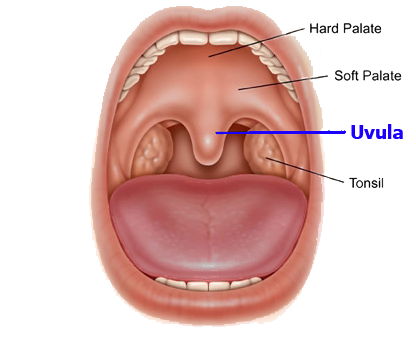Top French Pronunciation Mistakes and How to Avoid Them

French is a tricky language when it comes to pronunciation. All kinds of mistakes are possible when not applying the spelling rules. These rules are numerous and difficult to memorize in one shot.
This article is not for beginners. If you happen to be one, I wrote this reference guide in which I cover every sound in French and how to pronounce them correctly. This guide can also be helpful for the more advanced - everyone could use a refresher.
In this article, I will expose the most common mistakes English speakers make when speaking French - and even more interesting - how to solve the problem. Let's dive into it.
1. The Notorious 'R'
Reference the sounds to links
You may be familiar with this song by Edith Piaf. This weird 'r' in "rien de rien" has been heard countless times throughout the world. It happens that this sound is actually an old-fashioned French 'r' that is almost no longer used in France. However, trying to replicate it might be a good idea if you want to master the pronunciation of the French 'r'.

Most English and Spanish speakers get this sound wrong. The reason for this is because in these languages, the 'r' is made with the tongue touching the front of the mouth. In French, it's the opposite. If you want to perform an authentic French 'r', you'll have to stick your tongue to the back of your mouth. We're all familiar with the uvula - at least visually (see the picture above). French speakers make their tongues vibrate against the uvula when performing a 'r'. Now try it yourself!
Insider tip: you can train yourself to make this sound by gargling. Seriously, it works!
2. The Nasals: "an", "en", "on", "in", "ein", etc.
Nasal vowels (like those in the title above) do not exist in English so they might be tricky to implement when speaking. Before giving any tip on how you use your nose to speak French, let me quickly explain how the whole thing works.

When you speak, you are using - at least - two things: your mouth... and your nose. These are indicated in the picture above as the oral cavity and the nasal cavity. When speaking, air flows out of those two cavities. In English, only the "mouth" is used to produce vowels, not the nose. French, in contrast, uses both the mouth and the nose.
Briefly, if you want to perform the nasal vowels when speaking French, you'll have to open up that nasal cavity.
Let's do a little exercise. Pronounce the word "bobo" (child talk for mild injury). Now, try to transfer these "o"'s into your nose. You should now have pronounced the word "bonbon" (which means candy).
You can transfer this technique with multiple vowels. The nasal vowels have their oral counterparts (which means the latter are not pronounced with the nose). You can think of it like so:
- "a" => "an", "en"
- "è" => "in", "ein"
- "o" => "on"
Pronounce the letters on the right first, then go ahead and try to pronounce their nasal counterparts.
3. The "u"
In English, the letter "u" has multiple manifestations such as in "you", in "duck" or in "due". It's much simpler in French - the letter "u" will be pronounced THIS WAY almost every time.
Now, not all languages feature this sound and it can be quite difficult for a non-native to get it right.
However, there is a simple way to tackle this problem - using the closest sound and work your way to a proper "u". The two closest ones in English are "i" (as in "petit") and "ou" (as in "chou"). Notice how your lips are spread out when you make a "i". Now, round them up and you should get a proper French "u".
The same is almost true for "ou". Make a "ou" sound and then stick your tongue right behind your teeth. Congrats! You should now be getting it right.
4. The "e"
The "e" sound in French can be tricky because of the way it differs in different contexts.
There are two types of "e" in French - one is said to be open (like "è") and the other to be closed (like "é"). Again, the pronunciation guide that I've written explains in detail which one to use in the right context.
However, if you don't have time to read the guide, there is a simple rule of thumb that you can apply to determine which one to use.
-
If the word ends with a "e" followed by one consonant or more in final position (at the end of the word), the "e" should be open. Here are some examples (remember that mute "e"'s don't count for vowels).
One vowel:
bête (beast), net (net), pelle (shovel)Two vowels:
secteur (sector), peste (plague), sceptique (skeptical) -
If a letter "e" is followed a one consonant and a vowel, the "e" should be closed.
béton (concrete), fêter (to celebrate), mélanger (to mix) -
Finally, if a "e" in final position of a word should be closed.
été (summer), fêté (celebrated), rester (to stay)
Important notice: please note that I'm only referring to the "e" sounds written with the letter "e". In other words, I'm ignoring cases involving "ai", "ei", etc...
5. Silent letters
The goal of the complete guide to French pronunciation was essentially to cover every sound in the French language. The downside to this approach is that it does not cover the sounds that do not exist. Indeed, French is notorious for its wide array of mute (or silent) letters.
There is no easy way to overcome this problem for non-native speaker. The key is to get exposure to the language and practice your skills. The first step is, of course, to have an idea of the context in which silent letters occur. You can read this article to learn about this in detail.
If you've had a look at the preceding article, you've probably noticed that there are quite a few exceptions. In that regard, I suggest that you start to learn the general cases and then gradually implement the exceptions.
Here is a mnemonic trick to remember silent letters (which generally occur at the end of words):
P, T, S, D,
N(G), X, Z,
6. Liaisons
Liaison is a transition sound pronounced between two words. Although its purpose is to allow a smoother pronunciation, knowing when to do it and when not to can be tricky.
The good news is that this part of the complete guide to French pronunciation covers all the details on how to get French liaisons right.
The bad news is that there is no easy way to fix these mistakes. You have to actually learn in which cases liaison occur and in which ones they do not.
Final Word on Pronunciation Mistakes in French
Mistakes are part of the learning process and accepting them instead of rejecting them is always more helpful.
If you happen to know your weak spots, that's great. All you have to do is practice the correct form to be able to implement it later on.
If you are not aware of your mistakes, there is a great way to change that. Speechling allows you to record yourself reading French sentences and to send the result to expert native French speakers who will give you helpful feedback. Feedback is an essential part of language learning and Speechling is an easy way to benefit from for free!
